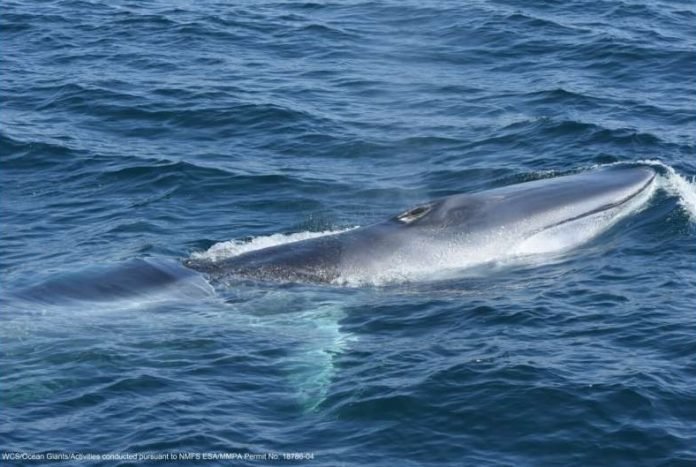
In recent research, scientists from the Wildlife Conservation Society (WCS) and Woods Hole Oceanographic Institution (WHOI) have made significant discoveries about fin whales, an endangered species, in the waters off New York and New Jersey.
This study, published in the journal Scientific Reports, highlights the New York Bight as a crucial habitat for fin whales year-round, challenging previous assumptions about their presence and offering new directions for their protection.
Fin whales, known scientifically as Balaenoptera physalus, are among the largest creatures on Earth. Despite their size and significance, they face numerous threats from human activities.
The study’s findings emphasize the need for targeted conservation strategies to safeguard these majestic animals throughout the year.
Traditionally, if endangered marine species were thought to inhabit certain areas only seasonally, protective measures, such as vessel speed restrictions, would be applied just for those periods.
However, this study’s revelation that fin whales inhabit the New York Bight area throughout the year underscores the necessity for continuous protection measures to mitigate threats like ship strikes and noise pollution.
To gather data, researchers employed passive acoustic monitoring from 2017 to 2020, analyzing fin whale song patterns to infer their presence, behaviors, and seasonal distribution.
The songs of fin whales were detected every month, with a notable increase from fall to winter, suggesting that this period may be linked to breeding behaviors. In contrast, songs observed in spring, characterized by longer intervals between notes, likely indicate foraging activities.
This nuanced understanding of fin whale behavior is crucial for developing effective conservation strategies.
The study’s use of acoustic buoys, deployed by WHOI, was pivotal in collecting this invaluable data.
These buoys not only facilitate the study of marine life but also play an essential role in informing industries, governments, and the public about the presence of whales in one of the world’s busiest waterways.
The presence of fin whales year-round in the New York Bight—a key gateway to the Port of New York-New Jersey—presents both challenges and opportunities for conservation.
While the area’s heavy maritime traffic poses significant risks to these whales, the consistent detection of fin whales also offers a unique chance to develop and implement conservation practices that could serve as a model for other regions.
Dr. Howard Rosenbaum, Director of WCS’s Ocean Giants Program, suggests that fin whales should be considered emblematic of New York and New Jersey’s marine biodiversity.
Despite being less visible than other marine mammals, the significance of fin whales in the region cannot be overstated.
This research not only sheds light on the critical habitat of fin whales in the New York Bight but also calls for a concerted effort to develop specific, year-round management strategies.
By understanding the distribution and behavior of fin whales in these waters, conservationists hope to better protect these endangered giants from the myriad threats they face in one of the most industrialized marine environments on the planet.
The research findings can be found in Scientific Reports.
Copyright © 2024 Knowridge Science Report. All rights reserved.



